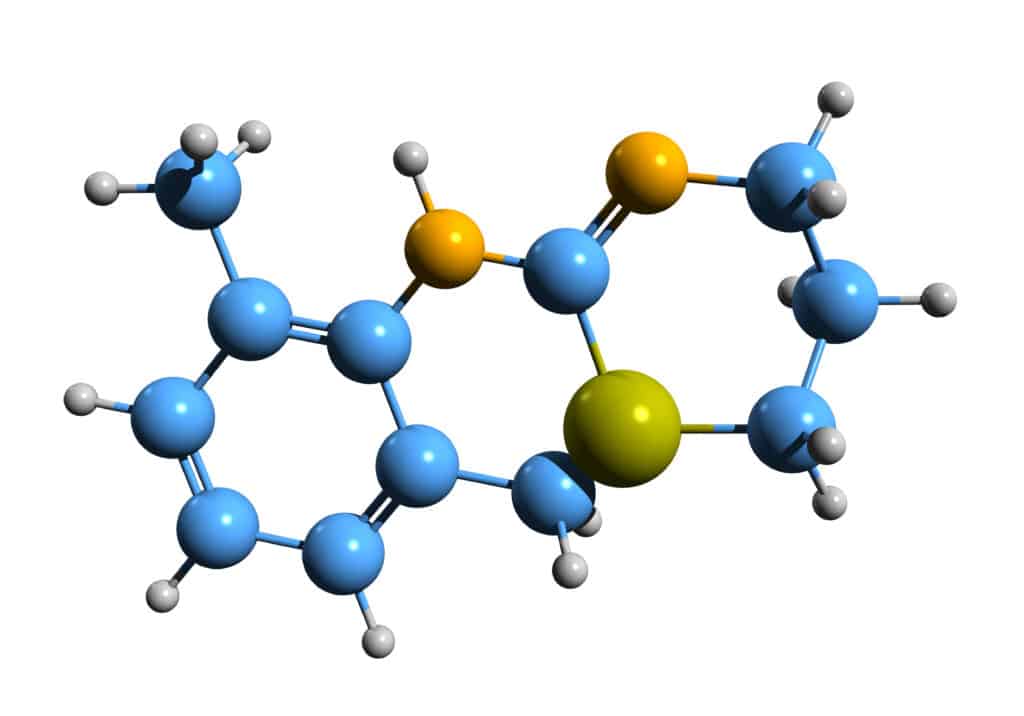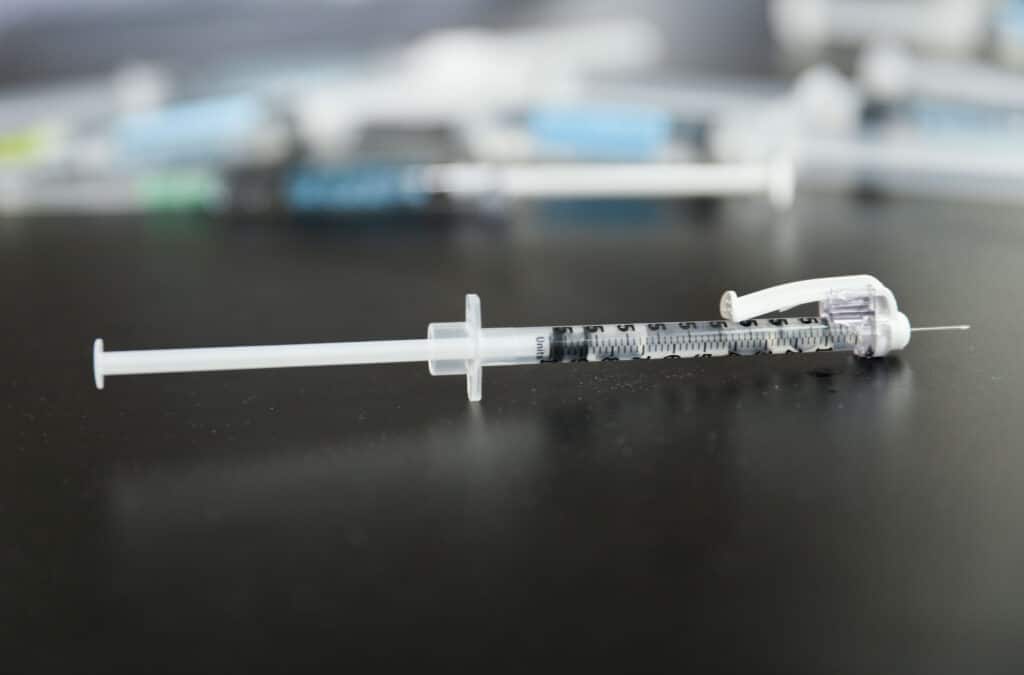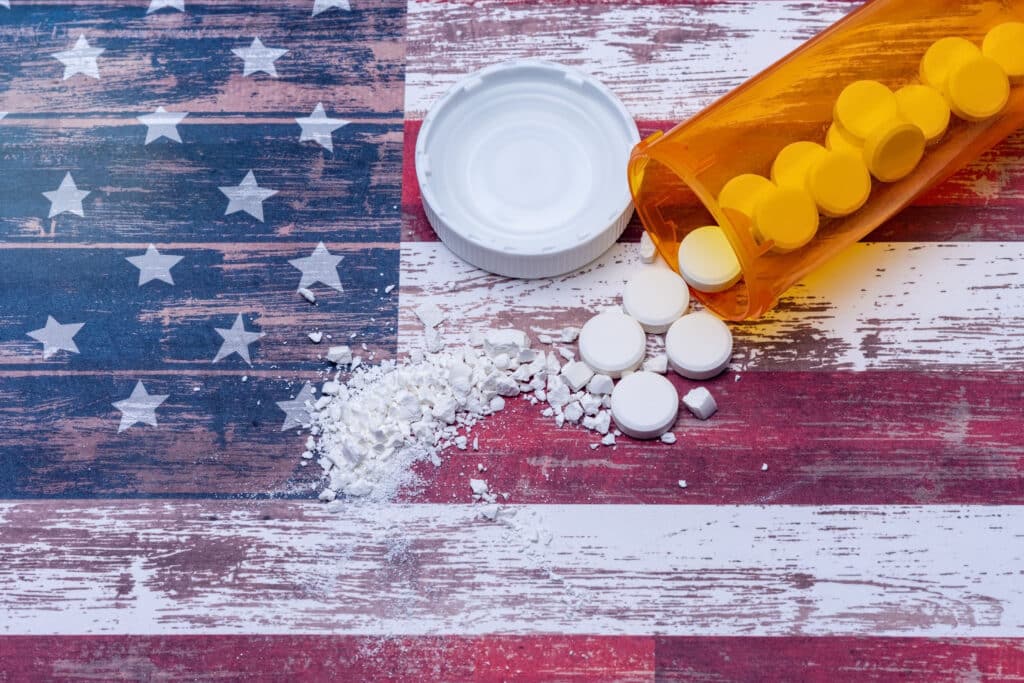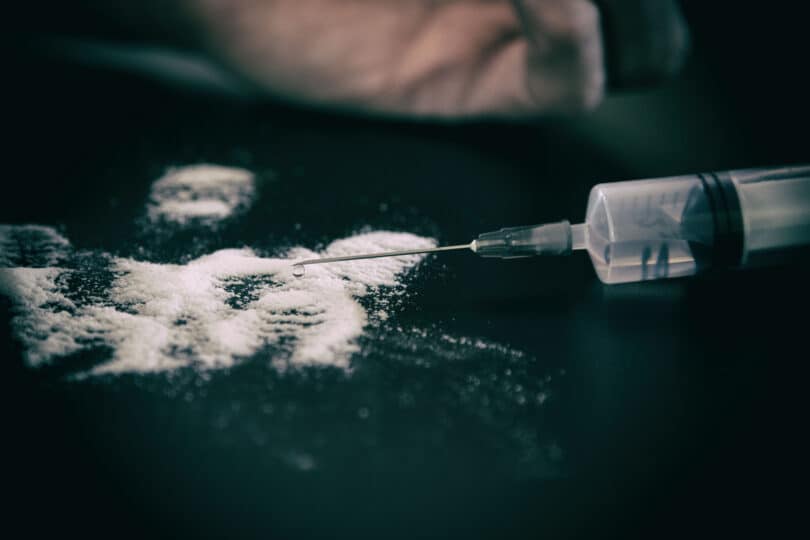There are some weighty drug issues in America. Whether you’re focused on the opioid crisis, or looking at meth or benzodiazepines, there’s a lot to worry over. And perhaps amid all this, the media can get carried away. The next big threat getting coverage? A drug called xylazine. Is this one we should be concerned over, or just hype due to America’s general drug issues?
What is xylazine?
So what is this drug which sounds like a cross between a pharma product and a musical instrument? Xylazine is a drug that was lab-created in 1962 as an anti-hypertensive drug. It was discovered by scientists in Germany working for Farbenfabriken Bayer. It works as a central nervous system depressant, and has sedation, anesthetic, pain-relieving, and muscle relaxant effects.
Unlike a drug like ketamine, which isn’t as destabilizing to the body, xylazine use lowers blood pressure and heart rate, making for a greater possibility of death, especially in conjunction with other CNS depressants. It’s technically only cleared by the FDA in the US for use in animals, for which its often used alongside ketamine. Use in humans wasn’t approved due to issues like hypotension and bracycardia. It’s mainly used for bigger animals like horses, cattle, and deer as a part of veterinary medicine.
News reports indicate the drug has surfaced in American drug culture, though not necessarily by direct use. Instead, its rising in popularity as a cutting agent for drugs like heroin and fentanyl. When mixed with fentanyl, its known as ‘sleep-cut’, ‘zombie drug’ and ‘tranq dope’. It’s at least somewhat associated with causing skin sores and infections, mainly at injection sites. This is due to it killing the surrounding cells, (necrosis) in the area, and related infections.

The drug is an analog of the drug clonidine, a blood pressure medication. It works by being an agonist at α2 receptors. It’s given by injection, either IV (in the vein), or IM (in a muscle). It has an extremely short half-life in animals like dogs, cattle, horses, and sheep; which is generally under six minutes, and as little as just over one minute.
This means its completely eliminated in under a half hour to about 50 minutes depending on specific animal; making it an extremely short-acting drug. In smaller animals like rats, the half-life is longer, coming to closer to an hour. According to research, the length of the half life is most related to age of the animal; but it seems there is a lack of hard and consistent information on this aspect.
In humans, the half-life is also very short. Though injection is the most common way to take it for humans, it can be taken orally, subcutaneously, or via inhalation as well. In humans, effects start after about 15-20 minutes, and can last up to about four hours. Once again, there is not a huge amount of information on this.
Though it has gained momentum in the news recently, it’s been a recreational drug since about 1979, or at least, that’s when the first reported case of toxicity was reported. Its used for recreational purposes in the US and Puerto Rico mainly, and was behind several deaths in a Puerto Rican prison in the early 2000’s. While xylazine is associated with overdose along with other drugs, it doesn’t seem to cause a huge death toll (or much of any) on its own.
Recent increase in xylazine use
The reality is, there isn’t a huge amount of information on this drug. Not on exactly what its capable of doing to humans, or in how often its used. But recent reports indicate that its seen more and more in overdose victims. According to the CDC, xylazine was implicated in less than 1% of overdose deaths in 2015 (as per a study on 10 cities), and rose to 7% by 2020. It said in Maryland between 2020-2021, 80% of opioid syringe samples tested by eight syringe testing programs, were positive for the drug.
According to a Newsweek article, between 2015-2020, in Pennsylvania it went from being involved in 2% of overdose deaths to 26%. Philadelphia, PA specifically reported (via CDC) that xylazine was found in 31% of overdoses involving both heroine and fentanyl in just 2019, and 90% of tested heroin samples, in 2021. In Connecticut, it was found in 10% of overdose deaths in 2020, and 19% in Maryland for 2021.

In just 2020-2021, xylazine in overdose victims increased by 103% in the Northeast of the US, 516% in the Midwest, 750% in the West of the country, and 1,127% in the South, as per the DEA via Newsweek. These increases point to its understood use as a cutting agent pretty much nationally.
It’s good to remember when looking at these numbers, though, that xylazine’s main use is only as a cutting agent for drugs like heroin and fentanyl. Which means its quite possible that none, or few, of the people who were found with it in their systems upon death, knew they were taking it. This likely goes for nearly all its use. The numbers do indicate that its use for this purpose has risen astronomically. It’s even thought these numbers might be low, as the drug isn’t always tested for. Or at least, hasn’t been until the recent spike in use.
To give an idea of how states are responding, Pennsylvania recently and temporarily made it into a controlled substance because of its widespread use in synthetic opioids. This went into effect June 3rd. This does not, however, stop its approved uses as a veterinary medicine.
Part of the ability for its quick spread, is likely due to not being a controlled substance in the US. As a veterinary medicine, its easily obtained online from suppliers. According to the DEA, it goes beyond this, and is often sold regardless of veterinary use. It points to Chinese suppliers, but its quite possible that that’s a limited scope.
One last aspect of xylazine which causes concern, is that it can’t be treated in the same way as opioids upon overdose. Right now, the drug naloxone is administered for opioid overdoses, and has the ability to reverse the effects. Xylazine does not respond to this, which could indicate that overdose victims have a lesser chance of survival when this is added in, even when receiving treatment for overdose.
Is this comparable to the opioid crisis?
Though its often written about now as a comparable threat to something like fentanyl, this seems to be incorrect on two levels. For one, it fundamentally doesn’t show the overdose rate of fentanyl, or opioids. Those drugs can cause death alone, regardless of being mixed with other drugs; though they often are. Xylazine isn’t known for its direct death toll, and none of the statistics I mentioned, are due to direct death. With such a short period of action, a lot is required with prolonged use, for an overdose.

Secondly, its not being sought after like fentanyl and other opioids. Fentanyl might end up in unwanted places, but its also a drug specifically bought. It seems literally all use of xylazine is as an additive by producers, so users themselves are not seeking it out. Thus, if its spread were inhibited, this wouldn’t be missed by those using the drugs its associated with. This is not the same for opioids, which are specifically sought after for direct use.
Having said all that, its definitely not a good thing to have more bad substances mixed into substances which can already kill people. Though xylazine does not seem to cause the same threat in getting people hooked, or being the drug of choice, it can certainly add a threat in conjunction with other drugs. As a drug which causes depression of the CNS, this makes the drugs its used with, that much more dangerous. In that sense, regardless of what the people are looking for, the growing use of this drug does pose a problem. Just not exactly the same kind that synthetic opioids do.
As per recent US statistics via the CDC, the overdose death toll for 2022 did increase, though at a lower rate than other years. Preliminary data indicates 109,680 deaths for the year, up from 109,179 the year before (originally reported as 107,622, indicating last year’s final number will also undergo adjustments). Unfortunately, a lower rate of increase, is still an increase; which means the drug problem has not been helped by any measures taken.
The grand majority of these deaths are related to synthetic opioids like fentanyl and oxycodone, although drugs like methamphetamine also contribute as large death toll drugs. As xylazine is specifically used in these drugs, it certainly does nothing good to have it around.
As a note, and I like to make this clear, regardless of which part you want to focus on, the entirety of these issues are lab-created. Even heroin started out as a pharmaceutical medicine back in the day, and so did meth. These are not issues of natural substances, meaning every death that occurs from these drugs, goes back to pharmaceutical companies, and the promotion of use through government regulation. This seems to be coupled with our extensive need to get high, which shows not just through the mentioned drugs, but in new drugs popping up all the time, like gas station heroin )also pharmaceutical).
Conclusion
Unless the drug becomes more popular on its own, xylazine is less the issue here, if you’re paying attention. Though it can cause skin ulcerations and necrosis, and contribute to issues because of its use with other drugs; the real problem is that there’s a huge opioid epidemic, for which this drug works as exacerbation. Unless it becomes an actually sought after drug though…getting rid of the opioid issue, would likewise get rid of this one. Something to remember.
Welcome to the site! We appreciate you making it to Cannadelics.com; where we work hard to bring you reporting on the most interesting stories in the cannabis and hallucinogen spaces, and beyond. We’ll keep you updated so stop by regularly; and sign up to the Cannadelics Weekly Newsletter, to ensure you’re never late to know what’s going on.



